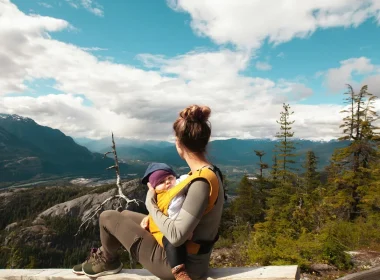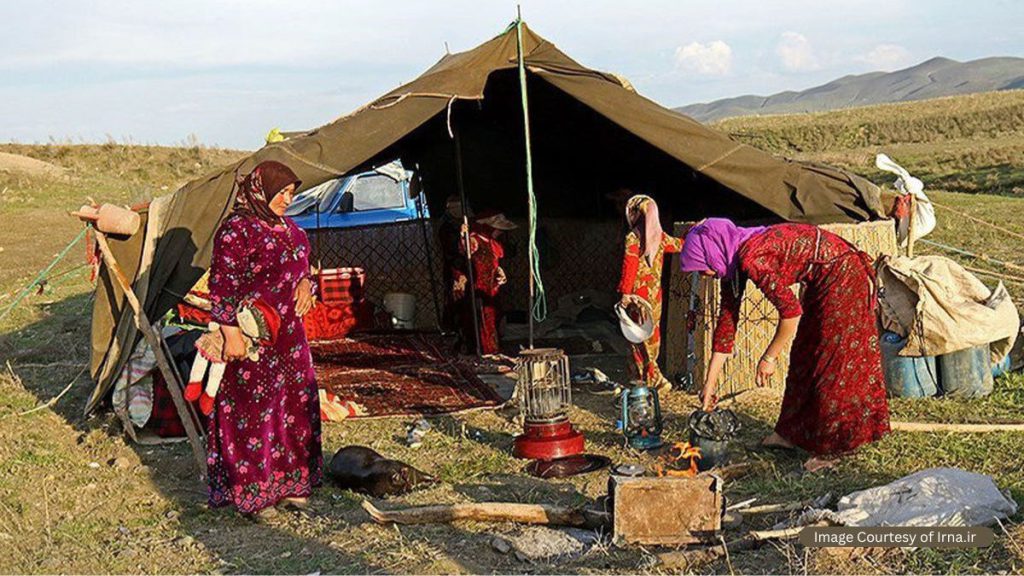
Iran nomad tours are the most responsible way to meet nomadic tribes such as Qashqai, Baluch, Bakhtiari, Shahsavan, Kurdish, and Turkmen. They are guardians of Iranian traditions that have thrived for millennia. Their seasonal migrations (kooch) across the Zagros and Alborz mountains are not just survival strategies but cultural traditions, blending resilience, artistry, and harmony with nature. Among all the Tours for Iran, this one offers travelers a rare window into this vanishing world, where life pulses to the rhythm of hoofbeats and campfire stories.
Iran Nomad Tours for Meeting with Various Iranian Tribes
Every tour of this type can serve as a workshop in Indigenous Sociology. You will get to know the fascinating ethnic diversity among Iranian nomadic tribes.
1. Tours of Qashqai Nomads: Weavers of the Wind
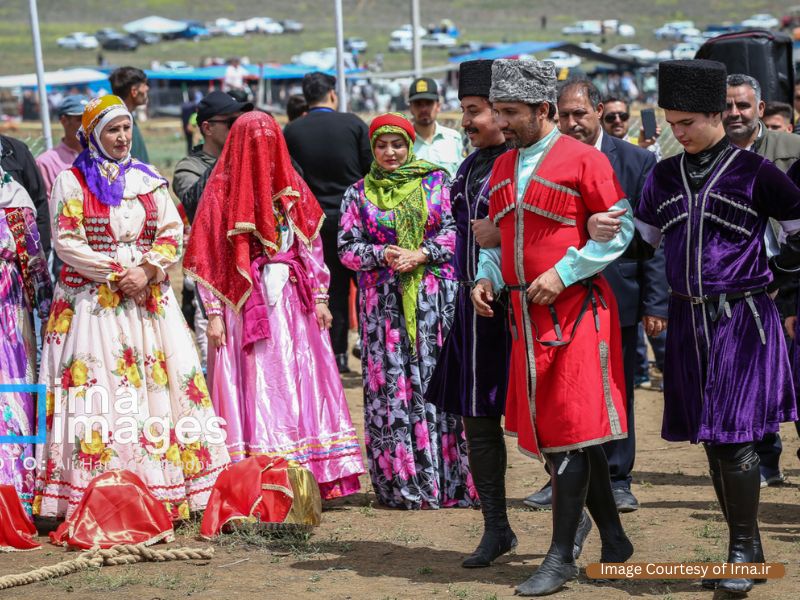
The Qashqai, renowned for their vibrant textiles and semi-nomadic lifestyle, migrate 480 km annually from Shiraz’s cool highlands to the Persian Gulf’s warmth. Their iconic black tents (siyah chador) dot the Zagros slopes, where women weave intricate rugs dyed with pomegranate and walnut—a tradition UNESCO recognizes as intangible heritage.
On an Iran Nomad tour of this area, you can join their kooch in spring to witness flocks crossing valleys or share korsi meals, where stories flow as freely as cardamom-spiced tea. Nearby, explore Persepolis and Margoon Waterfall, where mist-kissed cliffs frame nomadic trails.
- Migration: 480 km annually from Shiraz’s highlands to the Persian Gulf 6.
- Highlights: Participate in korsi gatherings (communal meals around heated tables) and rug-weaving workshops.
- Nearby Attractions: Persepolis, Margoon Waterfall, and Tang-e Bolaghi canyon.
2. Tours among Baluch Nomads: Desert Dwellers of the Southeast
The Baluch nomads thrive in Iran’s stark southeastern deserts, where the Dasht-e Lut’s scorching sands meet the Makran coast’s rugged shores. Known for their indigo-dyed chadors and intricate mirror embroidery, they migrate seasonally between arid plains and mountain foothills, herding camels and goats adapted to extreme heat.
On a tour among Baluch people, you will notice that hospitality is legendary—guests are welcomed with Polo Baluchi (traditional Balochi meat and rice dish) and Chai Sabz (herbal tea) in tents woven from palm fronds. Their Qichak (a stringed instrument) echoes tales of resilience under star-cloaked skies.
- Highlights: Embroidery Workshops where you can learn to stitch Baluchi doozi patterns, where mirrors and crimson threads symbolize protection. Camel caravans of salt traders tracing ancient routes to Pakistan’s border.
- Nearby Attractions include Lut Desert, Shahr-e Sukhteh’s “Burnt City,” a Bronze Age marvel, and Gwater Bay.
3. Tours to Meet Bakhtiari Nomads: Lions of the Zagros
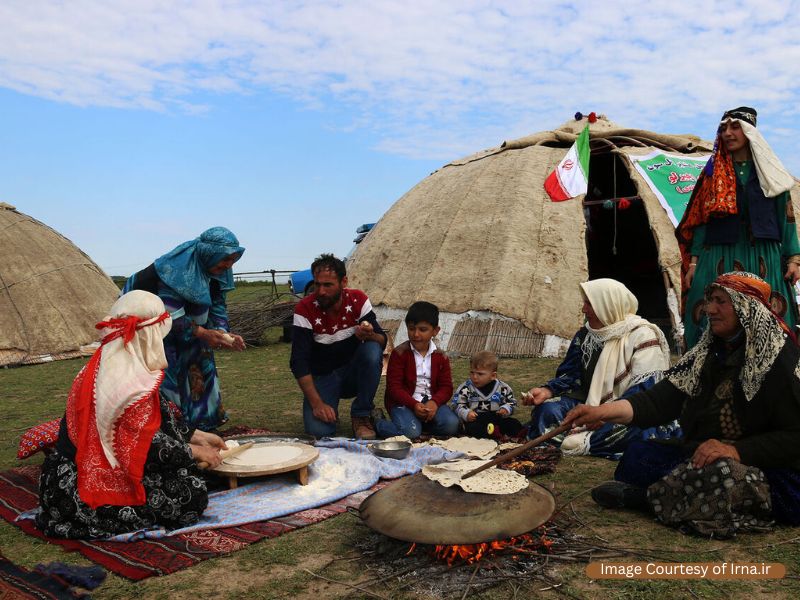
The Bakhtiari have braved 300 km biannual migrations for centuries, fording the Karun River’s rapids with flocks. Their resilience is legendary, mirrored in UNESCO-listed gelim textiles woven with geometric motifs symbolizing mountain spirits.
While traveling on a nomads’ tours in Iran, you can stay in their goat-hair tents and taste kale pache (head-and-hoof stew), a dish celebrating communal survival. Nearby, Choghakhor Lagoon hosts migratory birds, while Zard-Kuh peaks challenge trekkers to summit “Iran’s Matterhorn.”
- Migration: A grueling 300 km trek across rivers and mountains twice yearly.
- Highlights: Witness UNESCO-acclaimed Gilim textiles and stay in black goat-hair tents (siyah chador).
- Nearby attractions include Chogha Khor Lagoon and Zard-Kuh peaks.
4. Iran Nomad Tours among the Shahsavans: Defenders of the Northwest
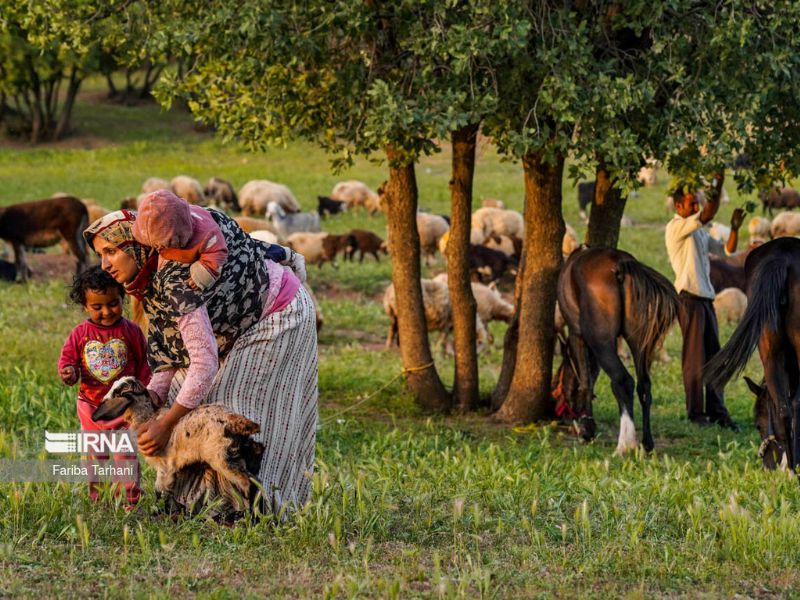
Distinguished by white tents symbolizing purity, the Shahsavan migrate between Ardabil’s plains and Sabalan Mountain’s slopes. Known for intricate soumak saddlebags and spirited zurkhaneh rituals (traditional martial arts), their culture blends Turkic and Persian roots.
After herding sheep on a tour among the Shahsavans, soak in Sabalan’s thermal springs or visit Mugan Plain, where nomads pasture flocks near Azerbaijan’s border.
- Unique Trait: White tents symbolizing purity, contrasting with other tribes’ black shelters.
- Highlights: Attend zurkhaneh (traditional gymnasium) rituals in Ardabil.
- Nearby Attractions: Mugan Plain and Sabalan Mountain’s thermal springs.
5. Tours of Kurdish Nomads of Iran: Guardians of Epic Traditions
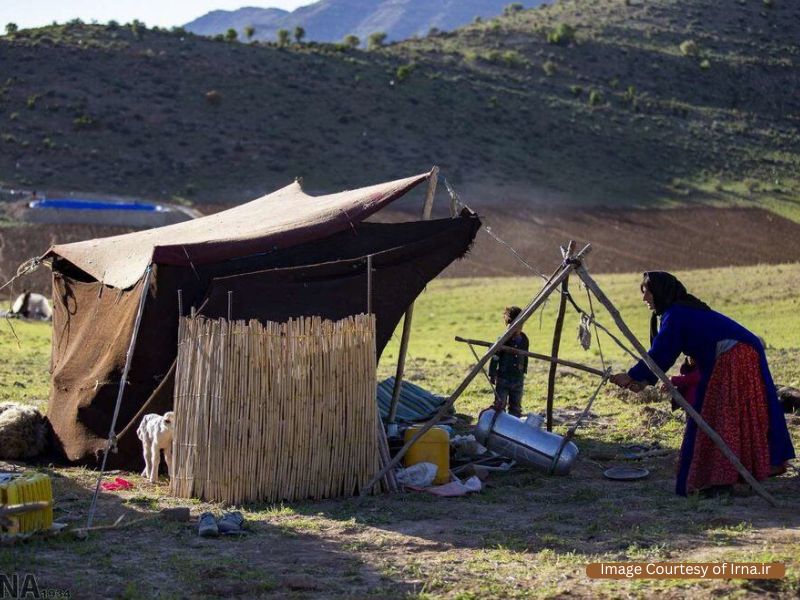
Kurdish nomads traverse vertical routes between Kurdistan’s summer pastures and Kermanshah’s winter valleys. Their jajim textiles and copperware echo Bronze Age craftsmanship, while nightly recitations of Ferdowsi’s Shahnameh (Book of Kings) keep ancient epics alive.
On a tour of Kurdish nomads, you can explore nearby Bisotun Inscription, where Darius the Great’s legacy is carved into cliffs, or hike the Taq-e Bostan grottoes adorned with Sasanian reliefs.
- Migration: Vertical shifts between Kurdistan’s summer pastures and Kermanshah’s winter valleys.
- Highlights: Listen to epic recitations of the Shahnameh (Book of Kings) and explore Bisotun’s ancient inscriptions.
6. Nomad Tours among Iranian Turkmen: Silk Road Descendants
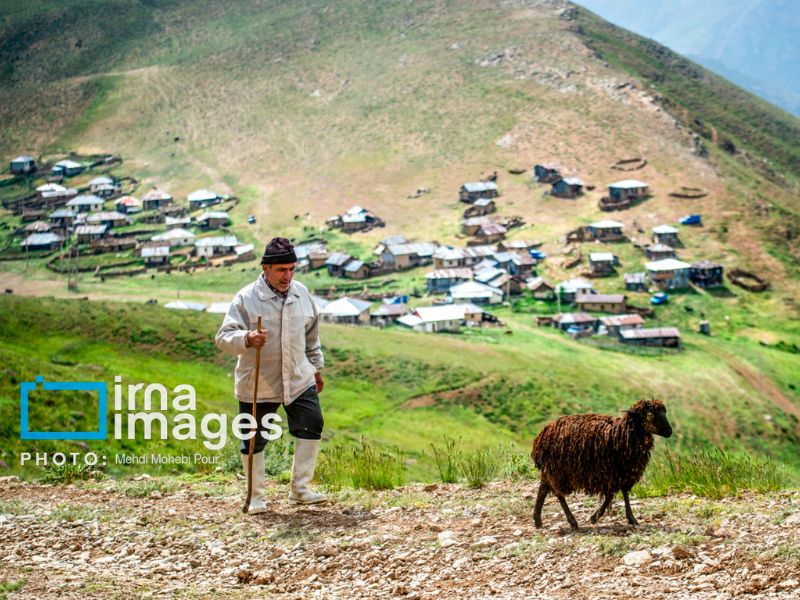
Turkmen nomads of Golestan Province trace their lineage to Silk Road traders, their lives intertwined with horseback archery and silk weaving. Migrating between Caspian grasslands and Alborz foothills, they honor ancestors with kamancheh (spike fiddle) melodies.
Post-tour, you can tour Golestan National Park—a UNESCO biosphere—or Ashuradeh Island, where the Caspian’s waves whisper of forgotten caravans.
- Migration: Seasonal shifts between Golestan’s plains and Caspian coastal grasslands.
- Highlights: Horseback archery displays and vibrant silk markets.
Why Choose Iran Nomad Tours?
It takes some courage to embark on a nomadic tour, but some upsides can’t be replicated in the comfort of urban tourism:
1. Cultural Immersion Beyond Compare
Unlike conventional tourism, a nomad’s Tour plunges you into daily nomadic life. Milk sheep at dawn with Bakhtiari herders, weave Qashqai carpets dyed with pomegranate, or share sangak bread baked over open flames. These interactions reveal a world where every gesture carries ancestral wisdom.
2. Landscapes That Defy Imagination
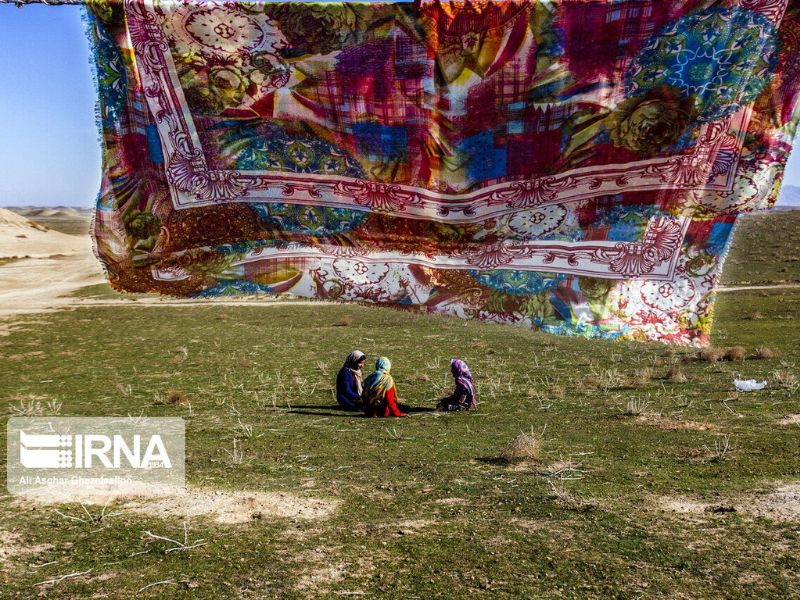
Nomadic trails wind through UNESCO-listed Zagros meadows, past Margoon Waterfall’s mist-kissed cliffs, and into the haunting valleys of Rig-e Jenn. These routes are a hiker’s paradise and a photographer’s muse, untouched by mass tourism.
3. Sustainable Travel with Impact
By joining Iran Nomad Tours, you directly support tribal economies. Many operators prioritize eco-friendly practices and fair wages, ensuring your visit helps preserve these cultures.
What to Expect on Your Nomad Tour
The nomadic tour is different in terms of scheduling and requires a bit more energy and a little tolerance for minor discomforts. There are no hotels, limited access to electricity, and urban comforts like coffee shops and fancy restaurants.
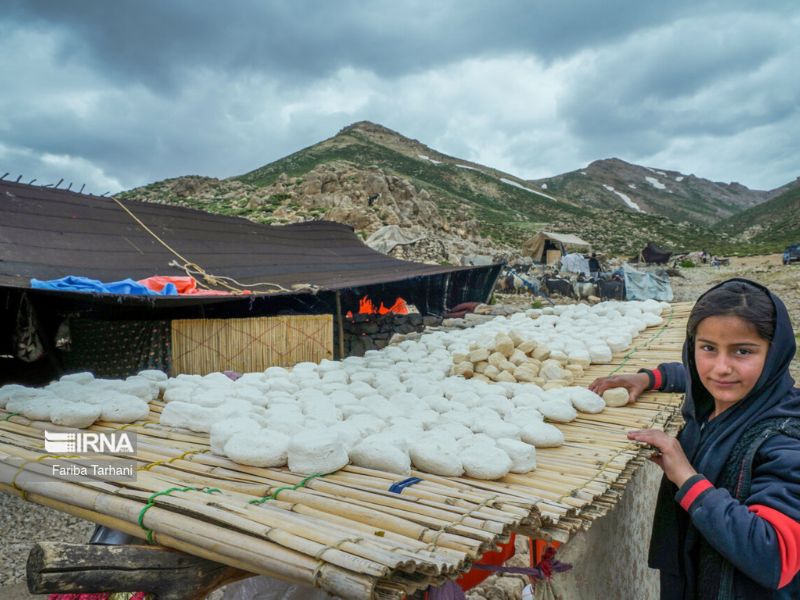
Daily Rhythms
- Dawn: Join herding routines or collect wild herbs like Golpar (Persian hogweed).
- Dusk: Share stories around fires, accompanied by the sorna (wooden flute).
Accommodation
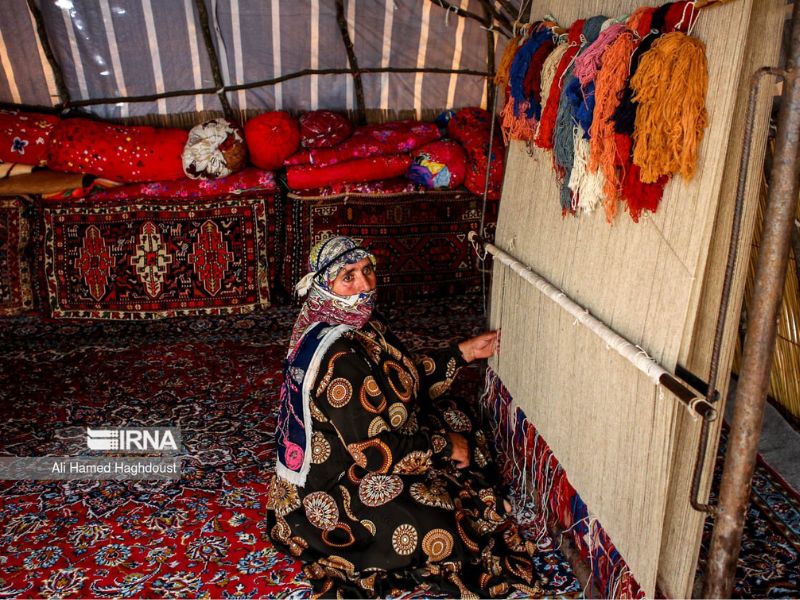
- Nomadic Tents: Sleep on woolen mats under goat-hair shelters, partitioned for families and livestock.
- Eco-Camps: Solar-powered stays like Khoye Village offer waterfall-fed showers.
Culinary Journeys
- Must-Try Dishes: Ash-e doogh (yogurt soup), kale pache (hearty stew), and honey-drenched nan-e berenji (rice cookies).
- Dietary Needs: Nomads adapt menus for vegetarians with herb-packed soups and eggplant dips.
Practical Tips for Nomadic Travel
Iran nomad tours take travelers beyond the beaten path, to the edges of civilization.
1. Best Time to Visit:
- Spring (April–June): Ideal for migrations and wildflower blooms.
- Autumn (Sept–Nov): Mild weather for returning to winter pastures.
2. Packing Essentials:
- Clothing: Modest, neutral-toned attire (long sleeves, headscarves for women).
- Gear: Sturdy hiking boots, reusable water bottle, and solar-powered charger.
3. Cultural Etiquette:
- Gifts: Bring notebooks or pencils for children—nomads value education but lack supplies.
- Photography: Always ask permission; some believe cameras capture souls.
4. Health & Safety:
- Vaccinations: Consult a doctor for hepatitis A/B and typhoid recommendations.
- Insurance: Use providers like IATI, which cover Iran.
Unique Experiences to Seek
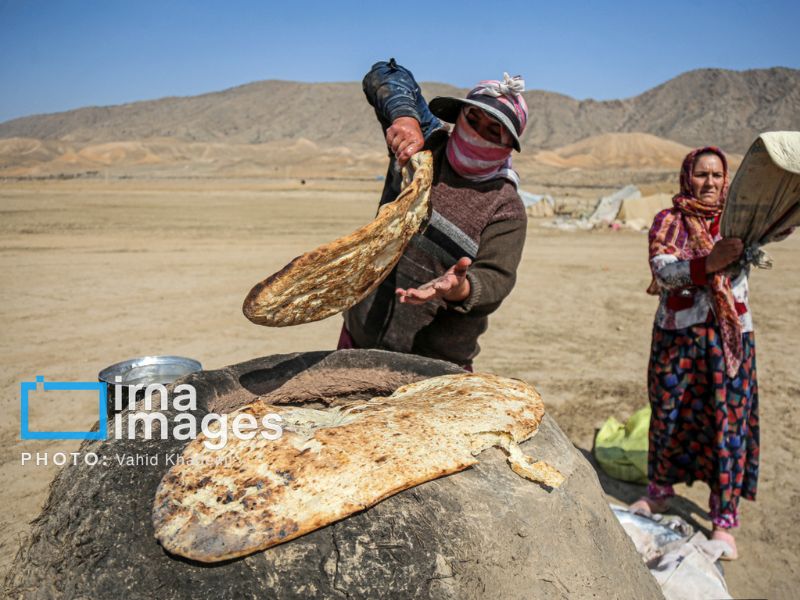
The nomadic experience is a thrill like no other. You can ask your tour provider about unique experiences such as:
- Migration (kooch): Join the Bakhtiari’s epic spring trek across the Karun River—a test of endurance and camaraderie.
- Nomadic Weddings: Dance to dohol (drum) rhythms at Qashqai celebrations, where guests are treated like royalty.
- Stargazing: The Zagros’ near-zero light pollution reveals constellations tied to Persian myths, like Shekar-e Ghavamin (“Hunter of the Sky”).
Beyond the Tents: Cultural Pairings
While visiting nomadic tribes, you can take a detour to nearby tourist attractions listed below:
- Shiraz: Post-Qashqai tours, explore Persepolis, and sip tea in Hafez’s garden.
- Isfahan: After Bakhtiari adventures, marvel at Naqsh-e Jahan Square’s mosaics.
- Tabriz: Post-Shahsavan journeys, wander the UNESCO-listed Tabriz Bazaar.
Explore the Mountains with Nomadic Tribes
Iran Nomad Tours are more than travel—they’re bridges between past and present. As modernity encroaches, these tribes remind us of resilience, community, and the art of living simply. Whether tracing the Qashqai’s rug-weaving legacy or sharing bread with Bakhtiari elders, your journey will leave footprints on your soul long after the tents fade from view.
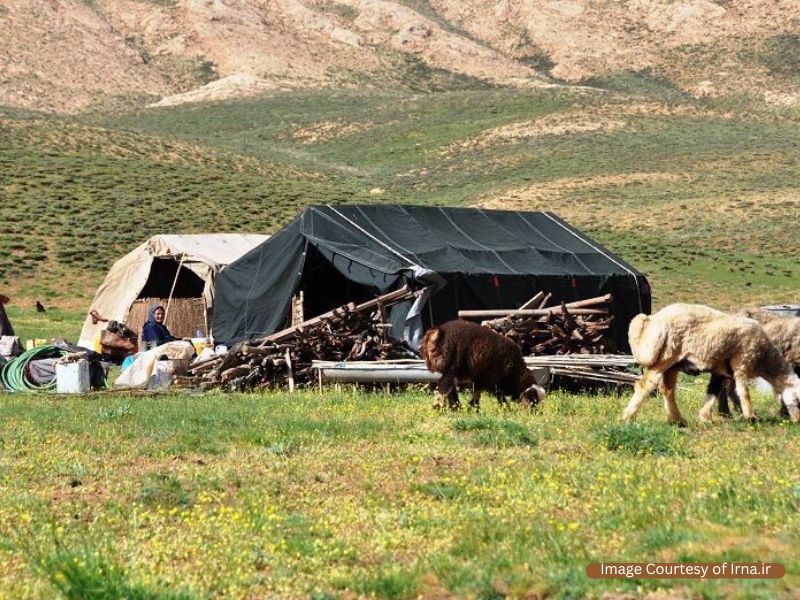
Frequently Asked Questions about Nomad Tours
Let us know if you have any other questions about nomad tours in Iran. We will respond as soon as possible.
How physically demanding are Iran Nomad Tours?
Most tours cater to all fitness levels, but Kooch migrations require 4–6 hours of daily trekking. If needed, opt for a shorter itinerary.
Are credit cards accepted in nomadic areas?
No. Carry cash (Euros/USD) for souvenirs and tips. ATMs are nonexistent in remote regions.
Can I charge devices in the desert?
Solar-powered camps offer limited charging. Embrace a digital detox—nomads thrive without Wi-Fi.
Is it safe to travel with Iranian nomads?
Yes. Guides ensure safety, and nomads are famously hospitable. Stick to marked trails in rugged terrain.



